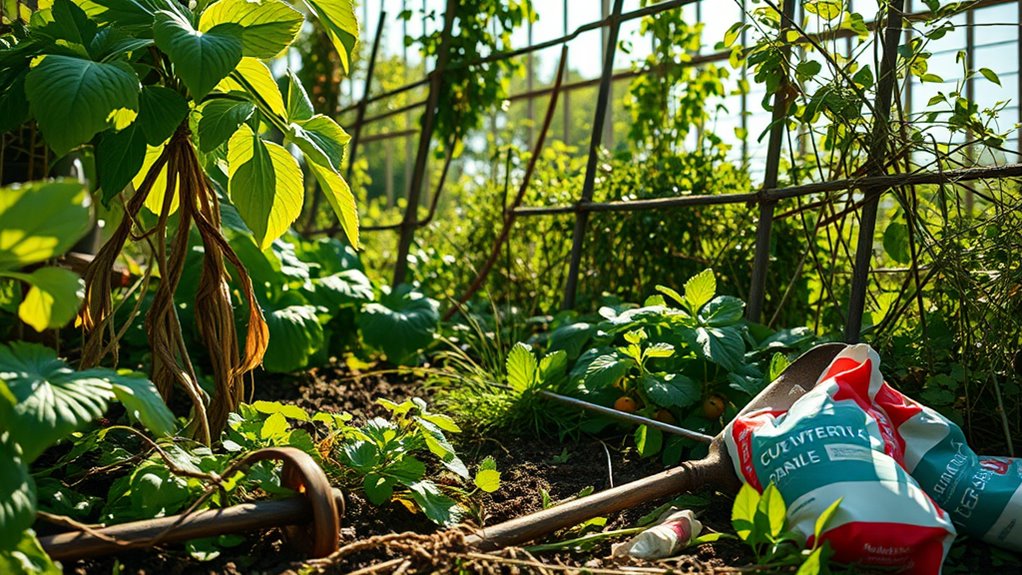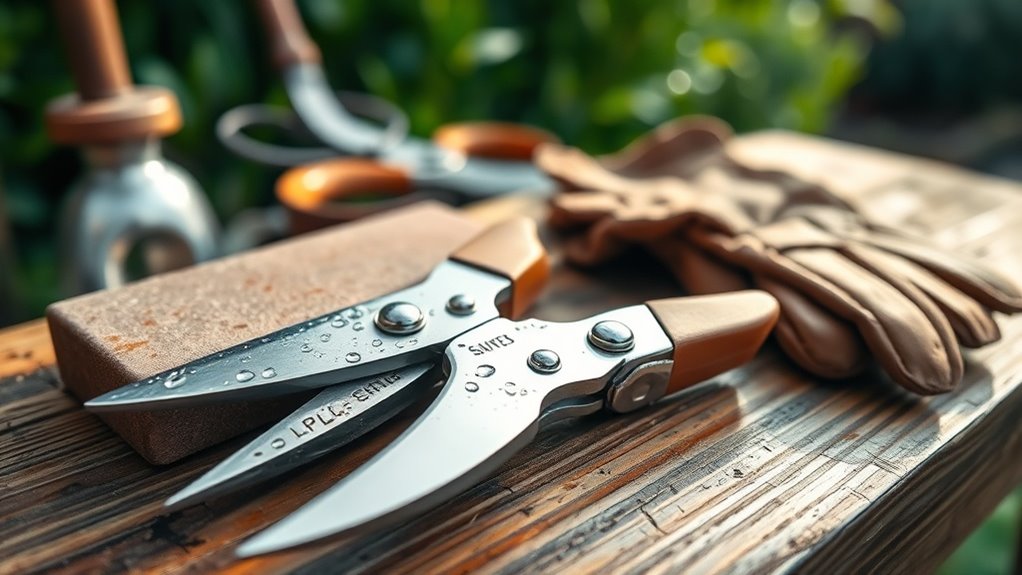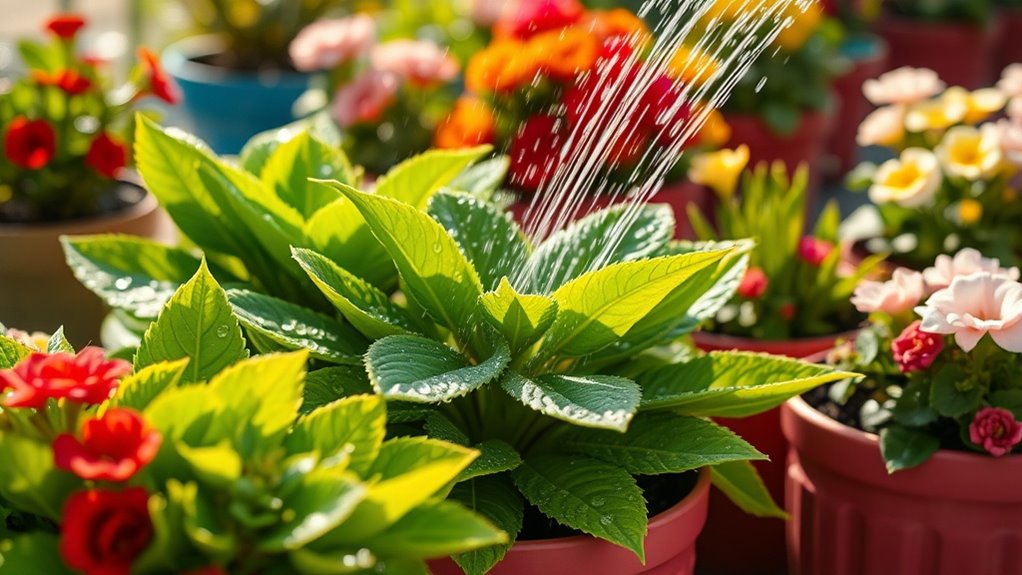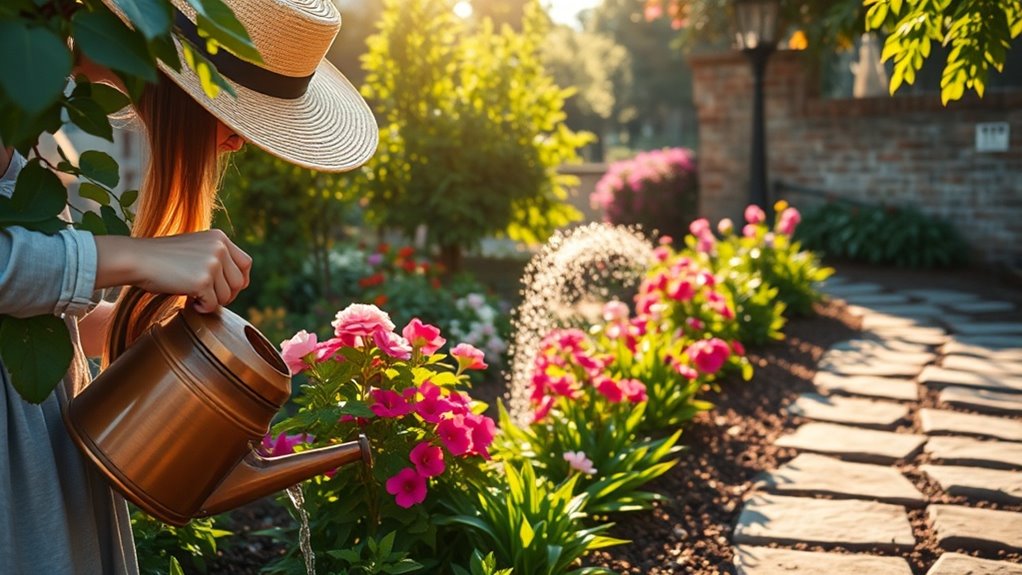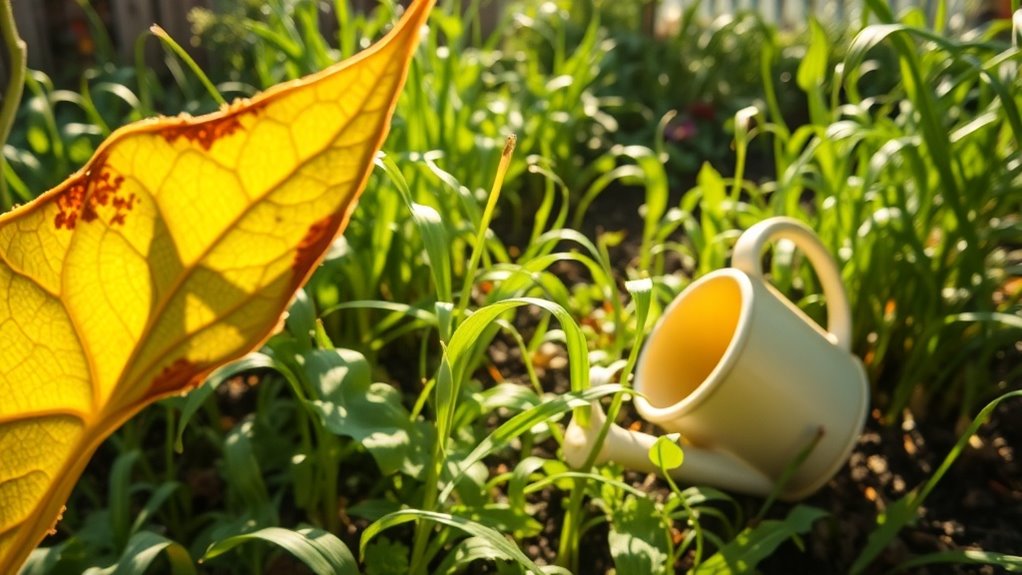6 Gardening Mistakes You’re Probably Making Right Now
You might not realize it, but several common gardening mistakes could be sabotaging your efforts. Overwatering, poor soil quality, and improper planting times often lead to unhealthy plants. Additionally, neglecting pest control and failing to choose climate-appropriate species can create significant setbacks. If you think you’re doing everything right, consider whether you’ve overlooked these critical aspects of gardening. Understanding these pitfalls could be the key to transforming your garden’s health and productivity.
Key Takeaways
- Overwatering can suffocate roots, leading to yellow leaves; always check soil moisture before watering.
- Neglecting soil testing can mask pH and nutrient deficiencies, hindering plant health.
- Failing to prune regularly can result in overgrown plants and poor airflow, affecting growth.
- Ignoring early signs of pests can lead to infestations, damaging your garden; conduct weekly inspections.
- Planting at the wrong time or selecting unsuitable plants for your climate can drastically reduce yields.
Overwatering Your Plants
Have you ever wondered why your once-thriving plants suddenly look droopy and lifeless?
One common gardening mistake is overwatering.
It’s easy to assume that more water equals healthier plants, but excess moisture can suffocate roots and create a breeding ground for root rot. One sign of overwatering is the appearance of yellow leaves, which can indicate that your plants are struggling to absorb oxygen.
To avoid this, check the soil’s moisture level before watering; it should be slightly dry to the touch.
Ensure your pots have drainage holes, allowing excess water to escape.
Remember, different plants have varying water needs, so tailor your approach.
Ignoring Soil Quality
Ignoring soil quality can lead to significant issues in your gardening efforts.
By testing soil pH and being aware of nutrient deficiencies, you can ensure your plants receive the essential elements they need for healthy growth. Understanding these factors not only improves your garden’s productivity but also enhances your overall gardening experience. Additionally, utilizing simple methods to evaluate soil health can provide you with insights into the condition of your garden’s foundation.
Testing Soil Ph
How often do gardeners overlook the importance of soil quality when testing pH levels?
Focusing solely on pH can lead to misguided conclusions about soil health.
While pH affects nutrient availability, it’s crucial to understand the soil’s texture, structure, and organic matter content.
Testing pH without considering these factors can mask underlying issues, such as poor drainage or compaction.
To achieve optimal growth, you should conduct a comprehensive soil analysis that includes physical properties.
This way, you’ll gain a clearer picture of your soil’s overall health and make informed decisions on amendments and plant selection, ensuring your garden thrives.
Nutrient Deficiency Awareness
What happens when you overlook soil quality while assessing nutrient deficiencies?
You might misdiagnose your plants’ issues.
Soil isn’t just a growing medium; it’s a complex ecosystem that supplies essential nutrients.
If you ignore its quality, you could miss critical deficiencies like nitrogen, phosphorus, or potassium.
Testing soil for pH and nutrient levels can reveal imbalances that affect plant health.
Compacted soil, poor drainage, or low organic matter can also inhibit nutrient availability.
Regularly assess and amend your soil to ensure it supports your gardening goals.
Don’t let hidden deficiencies derail your efforts; prioritize soil quality for vibrant, thriving plants.
Planting at the Wrong Time
Planting at the wrong time can significantly impact your garden’s success.
You need to be aware of seasonal planting guidelines, as well as the specific frost dates for your area, to protect your plants from unexpected cold snaps.
Additionally, understanding soil temperature is crucial, as it influences seed germination and overall plant health. Following seasonal planting guidelines can help you determine the best times to sow seeds and transplant seedlings for optimal growth.
Seasonal Planting Guidelines
When should you really be planting your seeds and seedlings?
Timing is crucial for successful gardening.
Different plants have specific requirements based on their growth cycles.
For instance, cool-season crops like peas and lettuce thrive when planted in early spring, while warm-season crops such as tomatoes and peppers should wait until the soil is consistently warm.
Additionally, consider your local climate and the average temperature patterns.
If you plant too early, seeds may rot in cold, damp soil; if you plant too late, they mightn’t mature before the first frost.
Always research your plants’ optimal planting times for best results.
Frost Dates Awareness
How can a simple oversight in timing lead to a garden’s downfall?
Ignoring frost dates can devastate your plants, as late spring or early fall frosts can freeze tender seedlings.
Understanding when these frost dates occur is crucial for successful gardening.
Here are three key points to consider:
- Check Your Zone: Identify your USDA hardiness zone to determine frost dates specific to your area.
- Monitor Weather Reports: Stay updated on local forecasts, especially during transitional seasons.
- Use Protective Measures: When planting early, employ row covers or cloches to safeguard against unexpected frost.
Soil Temperature Importance
Why is soil temperature crucial for successful gardening?
It affects seed germination, root development, and nutrient absorption.
If you plant too early or late, you risk stunted growth or poor yields.
Cool soil can delay germination, while excessively warm soil can stress plants, leading to wilting or disease.
To determine the right time for planting, monitor soil temperatures regularly using a thermometer.
Different plants have specific temperature preferences, so matching these to your local climate is essential.
Neglecting Pest Control
Neglecting Pest Control
Ignoring pest control can lead to devastating consequences for your garden.
Pests can quickly multiply, damaging your plants and reducing your harvest.
To maintain a healthy garden, consider these critical pest control strategies:
- Regular Inspections: Check your plants weekly for signs of pests, such as holes in leaves or sticky residue. Early detection is key.
- Natural Predators: Introduce beneficial insects like ladybugs or lacewings, which can help keep harmful pests in check.
- Organic Solutions: Use insecticidal soap or neem oil as a safe way to combat infestations without harming your plants or the environment. Additionally, incorporating eco-friendly methods can further enhance your pest protection efforts throughout the growing season.
Choosing the Wrong Plants for Your Climate
Choosing the right plants for your climate is crucial for a thriving garden. When you select plants that aren’t suited for your local conditions, you’re setting yourself up for disappointment.
Each plant has specific needs regarding temperature, moisture, and sunlight. For instance, tropical plants won’t survive in colder regions, while hardy perennials may struggle in extreme heat.
Researching your USDA hardiness zone helps identify which plants are most likely to succeed. Additionally, consider factors like soil type and local pests. One common mistake is ignoring hardiness zone guidelines, which can lead to choosing plants that can’t thrive in your environment.
Skipping Regular Maintenance
How often do you find yourself postponing garden tasks, thinking they’ll be fine for another week?
Skipping regular maintenance can lead to overgrown plants, pest infestations, and a decline in overall garden health. Staying on top of your garden care is crucial.
Here are three maintenance tasks you shouldn’t neglect:
- Weeding: Regularly remove weeds to prevent competition for nutrients and water.
- Pruning: Trim dead or overgrown branches to promote healthy growth and airflow.
- Mulching: Apply mulch to retain moisture, suppress weeds, and regulate soil temperature.
Incorporating a simple routine for garden maintenance can help ensure these tasks are completed efficiently.

